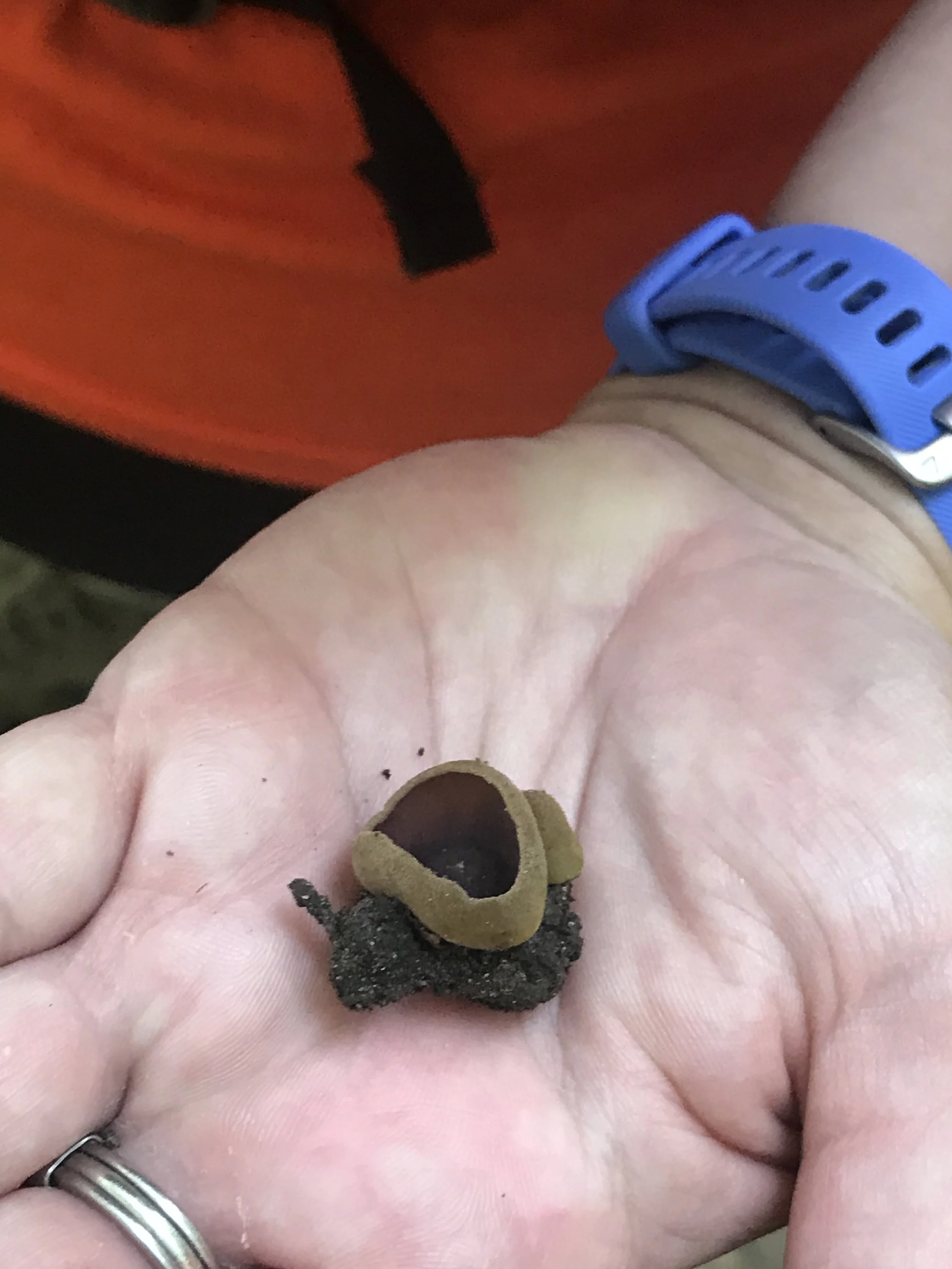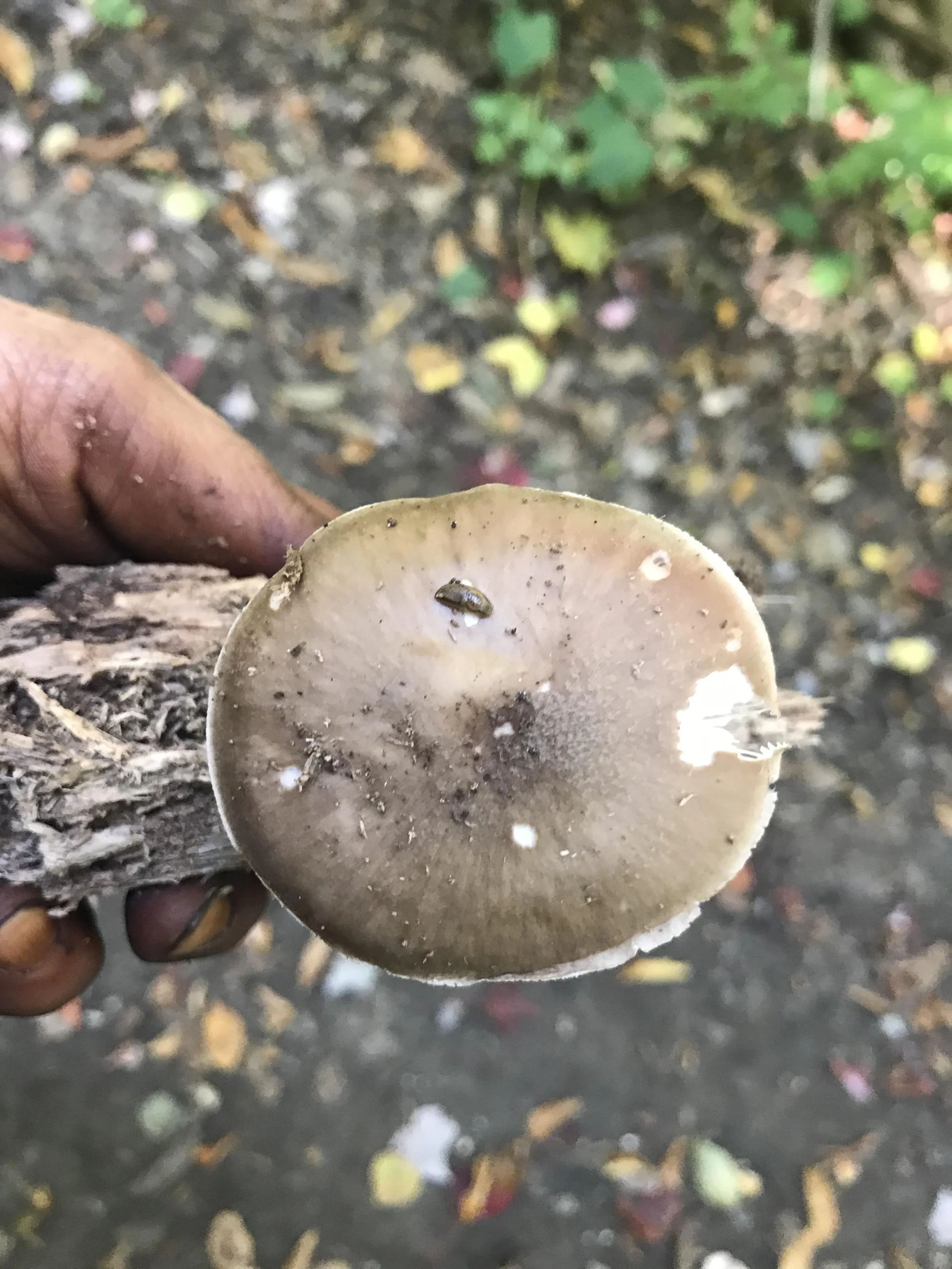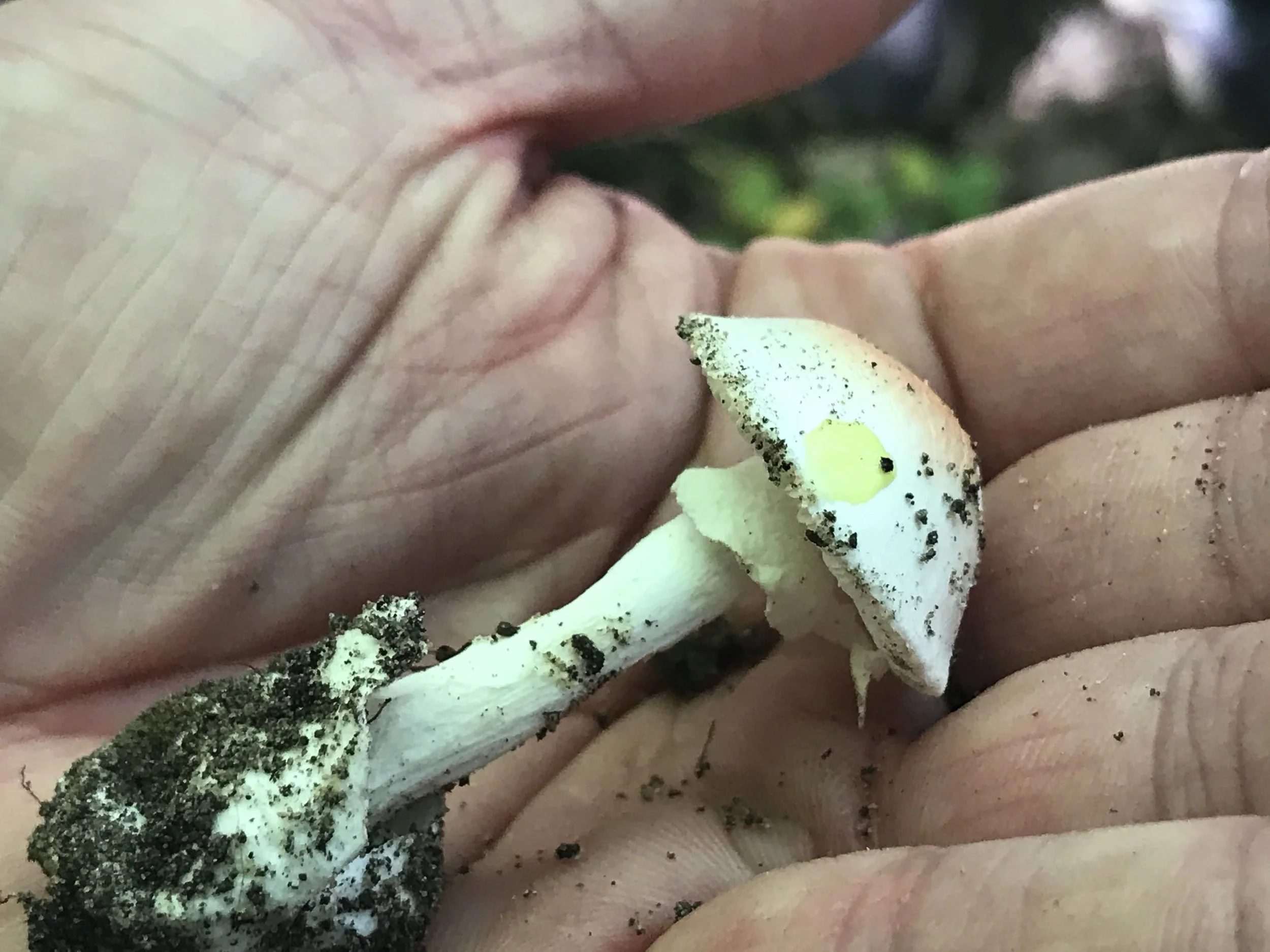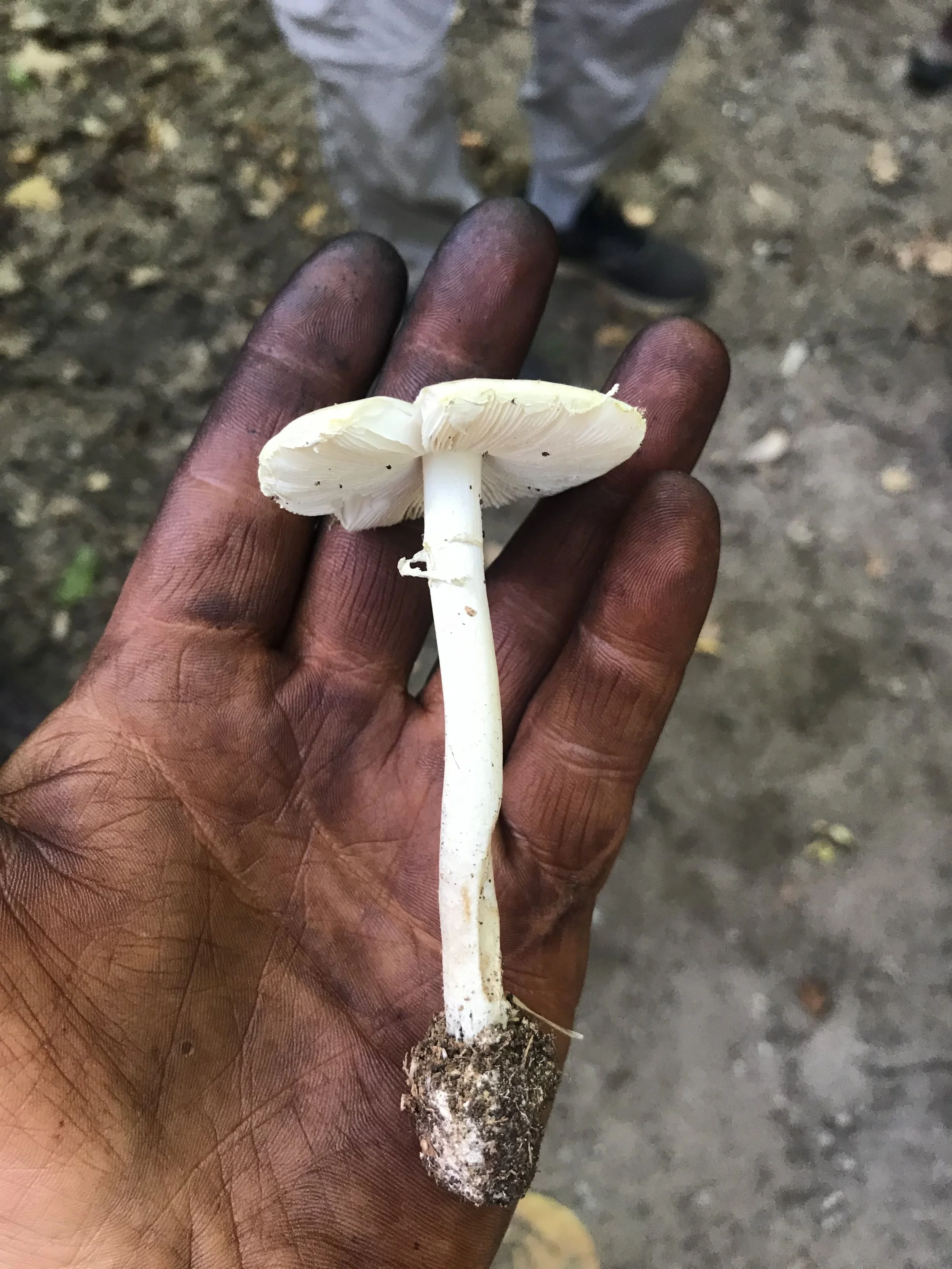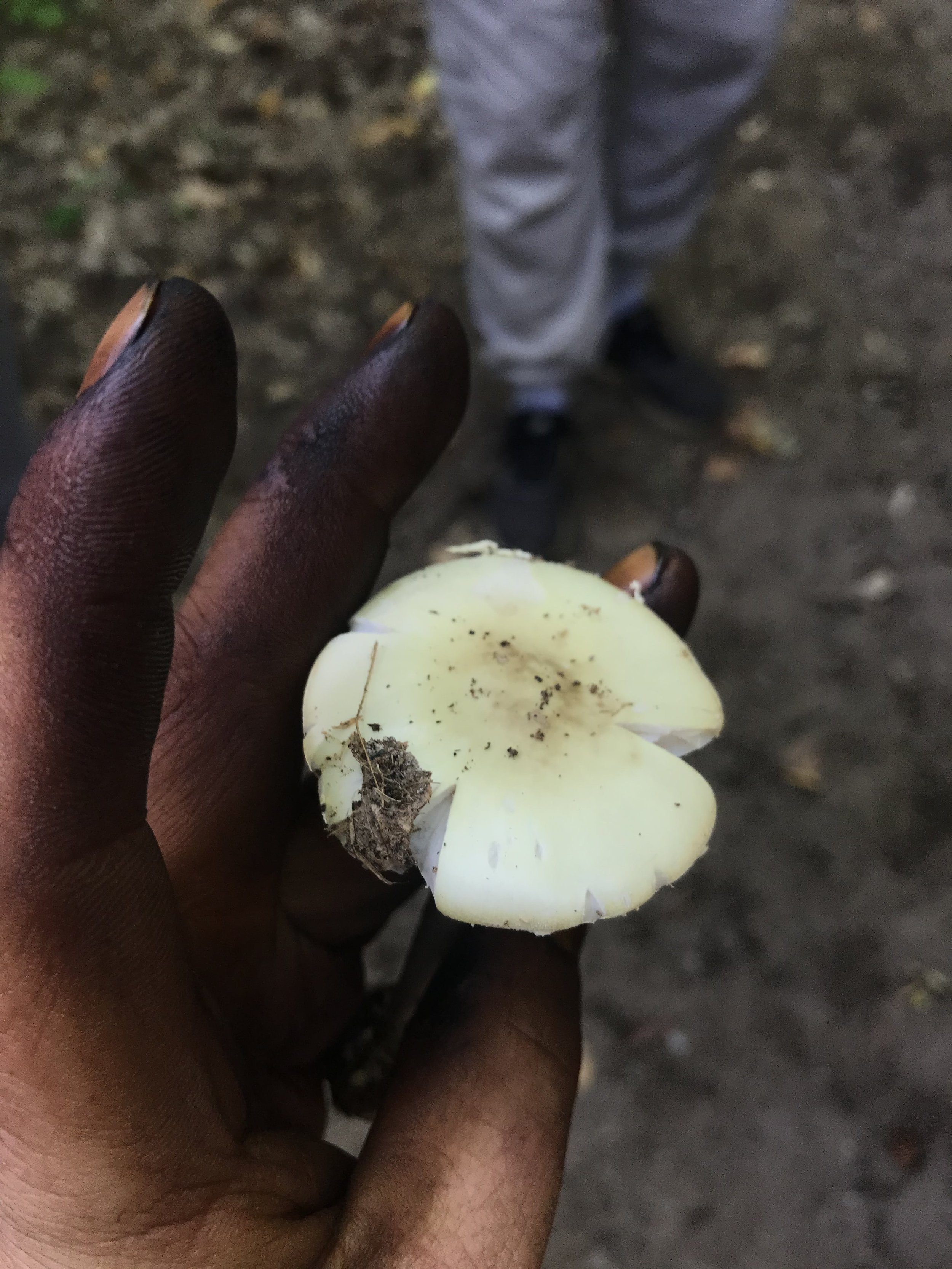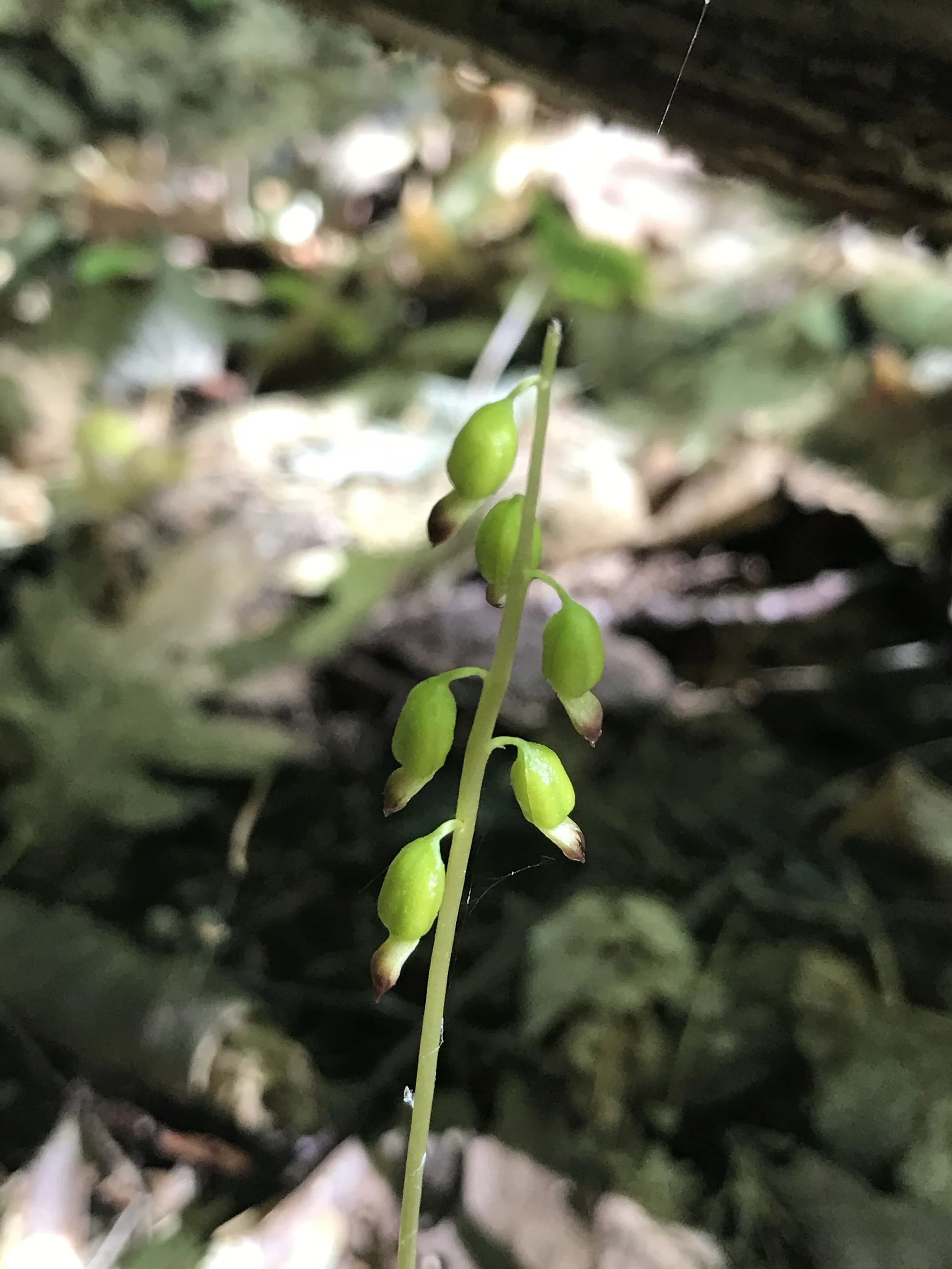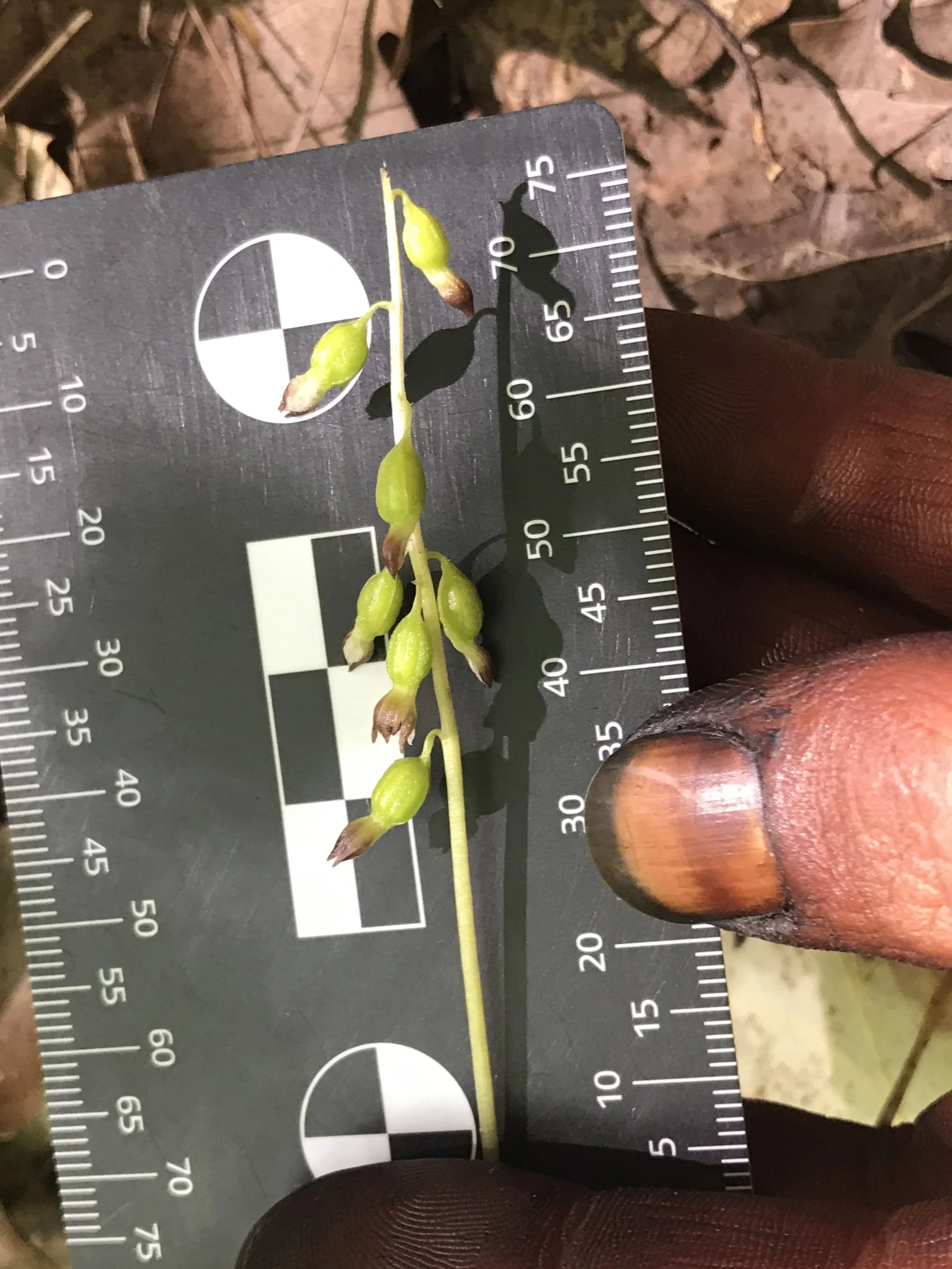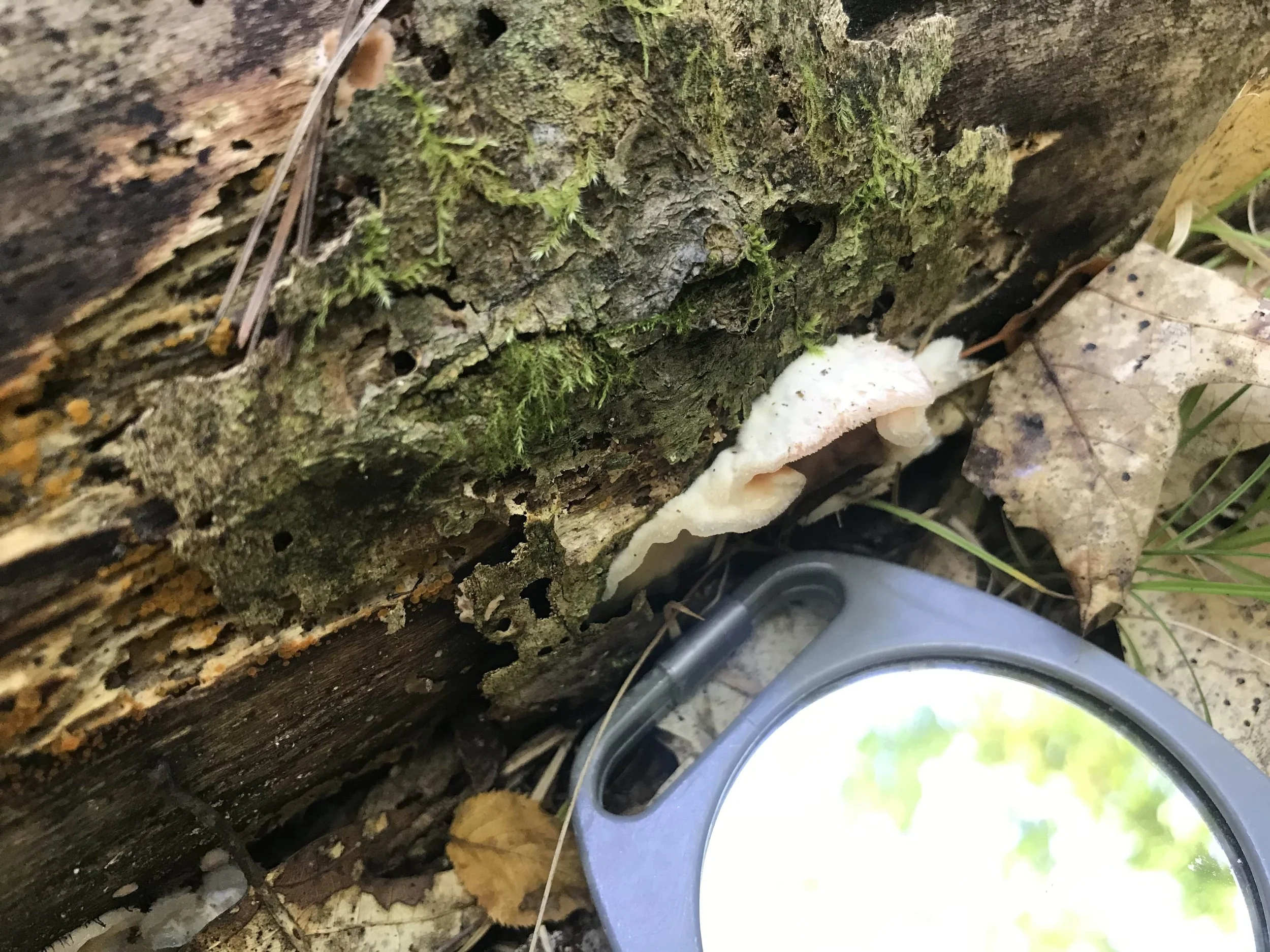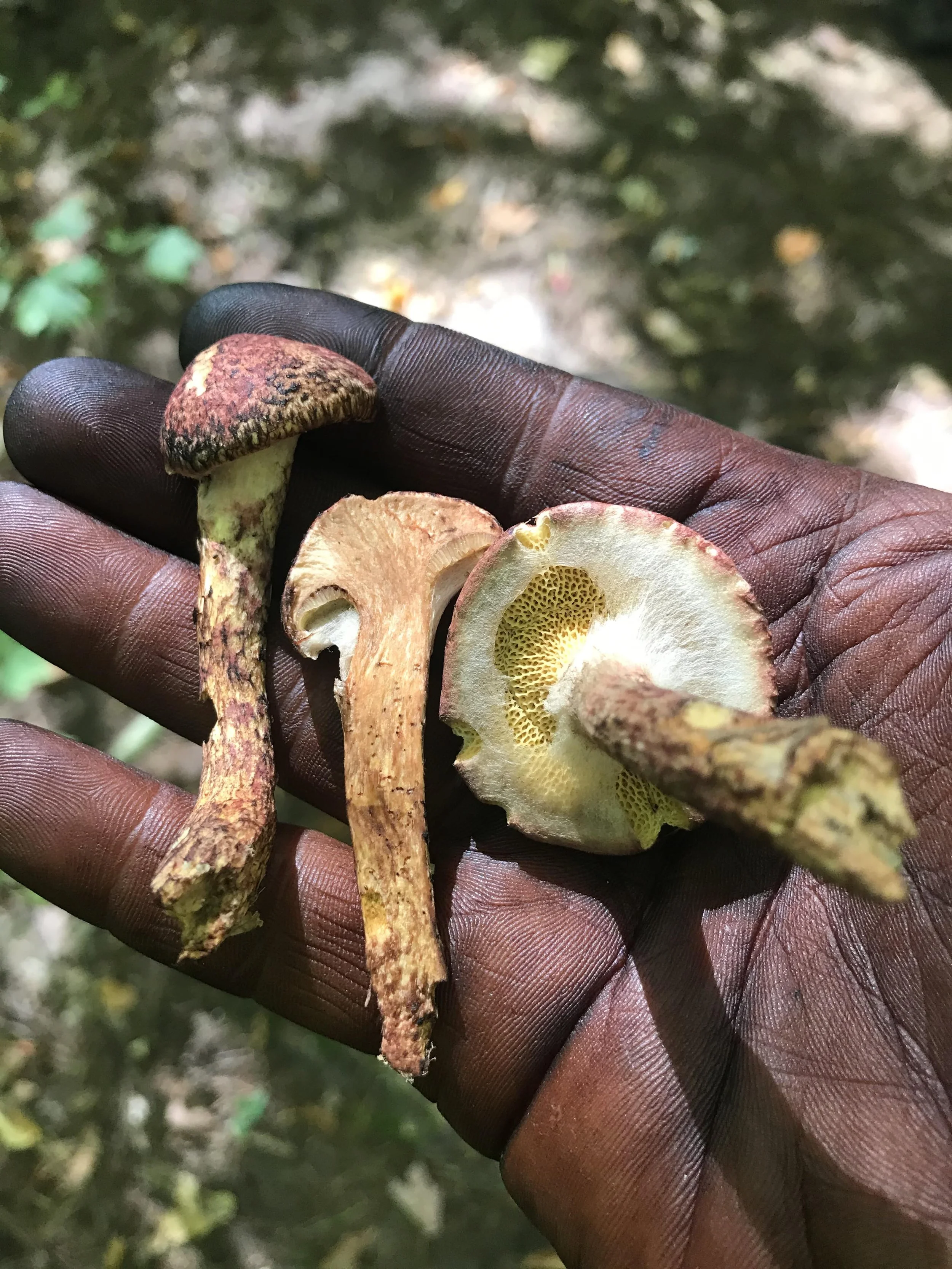Field Botanists of Ontario Trip Report for Main Tract Mushroom I.D. workshop
Pulling in to the parking area at Main Tract, the biggest of the tracts of the Dufferin County Forest (coming in at 607 hectares or 1,501 acres), my first thought was that I was way too early.
We were supposed to meet for 9:50am, and I was arriving early for 9:30. It was going to be my first outing with the FBO and I really wanted to arrive on time. Luckily I did arrive early as the parking lot was sandy which meant some good time looking for bird and invertibrate tracks while waiting for my fellow fungal nerds.
In short time I saw someone purposefully walking out of the forest and I went over to meet him, assuming he was the lead of our walk that day. I was correct, and Carl introduced himself and was sure to help me feel comfortable and welcome at my first outing. As everyone started to arrive we circled up, and then quickly made our way into the woods. Almost as soon as we did Carl bent over and pulled up a Cup fungi which was in the genus Peziza, but it may actually now be called a Paragalactinia michelii cup fungi. These fungi have a very bowl or cup like shape, and usually grow solitary or in groups, found growing on soil in woods, parklands and stream banks. I did not see where Carl had plucked them from, but we were in a mixed forest at the time so it would make sense.
Peziza cup fungi
As soon as we got some photos of the Cup fungi we were on the move quickly reviewing the differences between Ascomycetes and Basidiomycetes. Ascomycetes make their spores in microscopic sacs and are “shot out” under pressure usually due to the pressure from a passing breeze, rain drop or small animal encounter. Some Ascos are asexual and reproduce by forming small nodules which can break off and hitch a ride with the wind, another passing animal, and reroot somewhere new. We could get into the differences more, but this is a trip report, and not a textbook. Ascomycota fungi make up about 75% of all the described species of fungi and are the fungal component of most species of lichen.
We stopped again when someone handed Carl a piece of bark with a conventional looking mushroom with a pale stalk (or 'stipe') and a cap which was grey-brown, darker at the center with a pale margin. Carl told us this was a Common Deer Mushroom (Pluteus cervinus), and they tend to grow on rotten logs, and decaying wood and other woody debris. They are saprobes getting their nutrients from any decaying organic matter.
Common Deer Mushroom (Pluteus cervinus)
Carl had explained earlier that it was important to look at how the gills were attaching from the underside of the cap to the stipe. The gills on the Common Deer Mushroom appeared to stop short of the stipe and this was named as “free attachment”. Other mushroom's gills may attach directly in line with the base of the cap, and this is called “attached”. If the gills run down the stipe, it is called “decurrent”. Unsurprisingly, if there is a notch in the gills before they attach to the stipe, they are called “notched”. These attachment styles are useful in identification of different genera of gilled fungi.
We kept on the trail and even got off the trail a little to check out some downed logs and see who was growing on them. One of my favorite looking fungi of the day was a Pholiota mushroom. I know from previous experience that Pholiotas are impressively difficult to identify down to species so I just accept Pholiota when I see one. They are often pretty scaley, growing from dead logs, and pale yellowy-orange and often in clumps. This time there were only two Pholiotas growing on the log, but they were impressive nonetheless.
Pholiota mushroom
Everyone knows there are deadly poisonous mushrooms to be found, but it's still exciting when we do come across them. One of the well known genera with toxic mushrooms are the Amanitas. The toxic component is called Amatoxins. It is these amatoxins which enter the bloodstream and damage internal organs, but it's really the damage done to the heart, kidneys and especially the liver which is likely to kill you (these are the first organs the toxins encounter after being digested). They are taken up in the liver, and then excreted through bile into the blood, then back to the liver, causing a cycle of poisoning. The amatoxins break down cell walls. If the cells in the liver or heart are damaged, this can cause the cells to breakdown quickly and cause the liver or heart to literally dissolve. The acute symptoms can include headache, nausea, coughing, diarrhea, and lots of urination. After about 12-24 hrs, there is an eye of the storm moment where all appears to be well, but after this second 12-24 hr period of calm, the liver and kidneys start to fail, and death can happen on the second day after being poisoned. There have been cases of survival from around the world, but it seems measured by the amount of deaths associated with these mushrooms. For these reasons, the information above makes me want to learn more about the Amanitas and how to identify them properly. Thankfully Carl shared some pointers. He told us to look for the volva, or egg-like structure at the base of the stipe from where the mushroom emerged. He also said to look for a ring around the stipe below the cap. This ring is the remnants of a thin veil which concealed and protected the gills while the spores were developing. He told us that Amanitas usually have pale gills, which are freely attached, and leave a white spore print. He even told and showed us how he uses a drop of potassium hydroxide or KOH which he gently places on the flesh of the mushroom to help in determining identification. The KOH can change the colour of the fungi where the drop was placed, and for Amanita bisporigera, the flesh can turn yellow. Amanita bisporigera is commonly known as The Eastern North American Destroying Angel, which just makes it more intriguing.
Likely the Eastern North American Destroying Angel (Amanita bisporigera)
We did find another Amanita later that day, but it was A. citrina, which is not edible, but also not toxic.
Amanita citrina
Amanita citrina
Aside from fungi, I was introduced to a new plant. Autumn Coral Root (Corallorhiza odontorhiza) an herbaceous perenial wildflower in the Orchidaceae family, is similar to Ghost Pipe (Monotropa uniflora) in that the plant lacks or has small amounts of chlorophyl and cannot photosynthesise. Instead C. odontorhiza is myco-heterotrophic, meaning rather than obtaining energy from the sun and nutrients from the soil, they tap into and rely on mycorrhizal fungal networks for obtaining what they need to grow. I was taught years ago that these plants were saprotrophic, feeding on decaying plant material in the soil, but times and research change.
It is worth noting that there are some varieties of Autumn Coral Root, and the variety we found is named Corallorhiza odontorhiza var. odontorhiza and is individuated from other varieties by the closed flowers. Below is a from a short article by Michael J. Oldham and Jessica Consiglio, “Botanical roots “, published in the FBO Newsletter Summer 2018, which goes into much more detail on the Autumn Coral Root.
“Of the two varieties are recognized by Freudenstein (1997), var. odontorhiza with closed (cleistogamous) flowers and var. pringlei with showy, open flowers. Both varieties occur in Ontario and have been studied by Paul M. Catling (1983) and J. Ross Brown (1984); var. odontorhiza is the more common variety in Ontario and elsewhere.”
Autumn Coral Root ( Corallorhiza odontorhiza var. odontorhiza)
Autumn Coral Root (Corallorhiza odontorhiza var. odontorhiza)
While sharing my thoughts about this trip report with former FBO board member Kasia Zgurzynski, she shared Robert Frost's poem on Autumn Coral Root which I thought appropriate to share here:
On Going Unnoticed
As vain to raise a voice as a sigh
In the tumult of free leaves on high.
What are you in the shadow of trees
Engaged up there with the light and breeze?Less than the coral-root you know
That is content with the daylight low,
And has no leaves at all of its own;
Whose spotted flowers hang meanly down.You grasp the bark by a rugged pleat,
And look up small from the forest's feet.
The only leaf it drops goes wide,
Your name not written on either side.You linger your little hour and are gone,
And still the wood sweep leafily on,
Not even missing the coral-root flower
You took as a trophy of the hour.- Robert Frost
Other notable species we found on our introduction to mushroom identification were Trembling Polypore (Phlebia tremellosa), and the lovely Painted Bolete (Suillus spraguei).
Trembling Polypore (Phlebia tremellosa)
Painted Bolete (Suillus spraguei)
But the big mystery was something a little different. We noticed blotches of blue-grey masses at the base of some of the smaller American Beech (Fagus grandifolia) trees in the forest as we made our way back towards the parking lot. We investigated and discovered that the blue-grey to black masses were all below small colonies of Wooly Beech Aphids (Phyllaphis fagi). I do not remember who figured it out first, but someone mentioned that these masses were in fact a fungi, a mold actually, named Honey Dew Eater or Black Sooty Mold (Scorias spongiosa). The aphids consume sap from the Beech trees, and then when the Aphids excrete the sugary “honey dew” it drips down the to leaves below and on to the ground. Eventually spores from the mold land atop the honey dew secretions and begin to bloom and spread.
When in an asexual stage of growth the Honey Dew Eater is pale yellow, and looks a little like saw dust. This asexual stage appears in summer and persists through the winter. In spring, the Honey Dew Eater transforms from the asexual stage to a sexually mature spore producing stage. This change is noted by the colour of the mold changing from the pale yellow saw dust colour to a dark blue-grey to black. This blackened crusty coating can persist so it could be a sign of a previous aphid infestation even when the aphids are no longer present. I found this fungi to be really interesting and is one I'll surely be looking for from now on, even if it's not a mushroom.
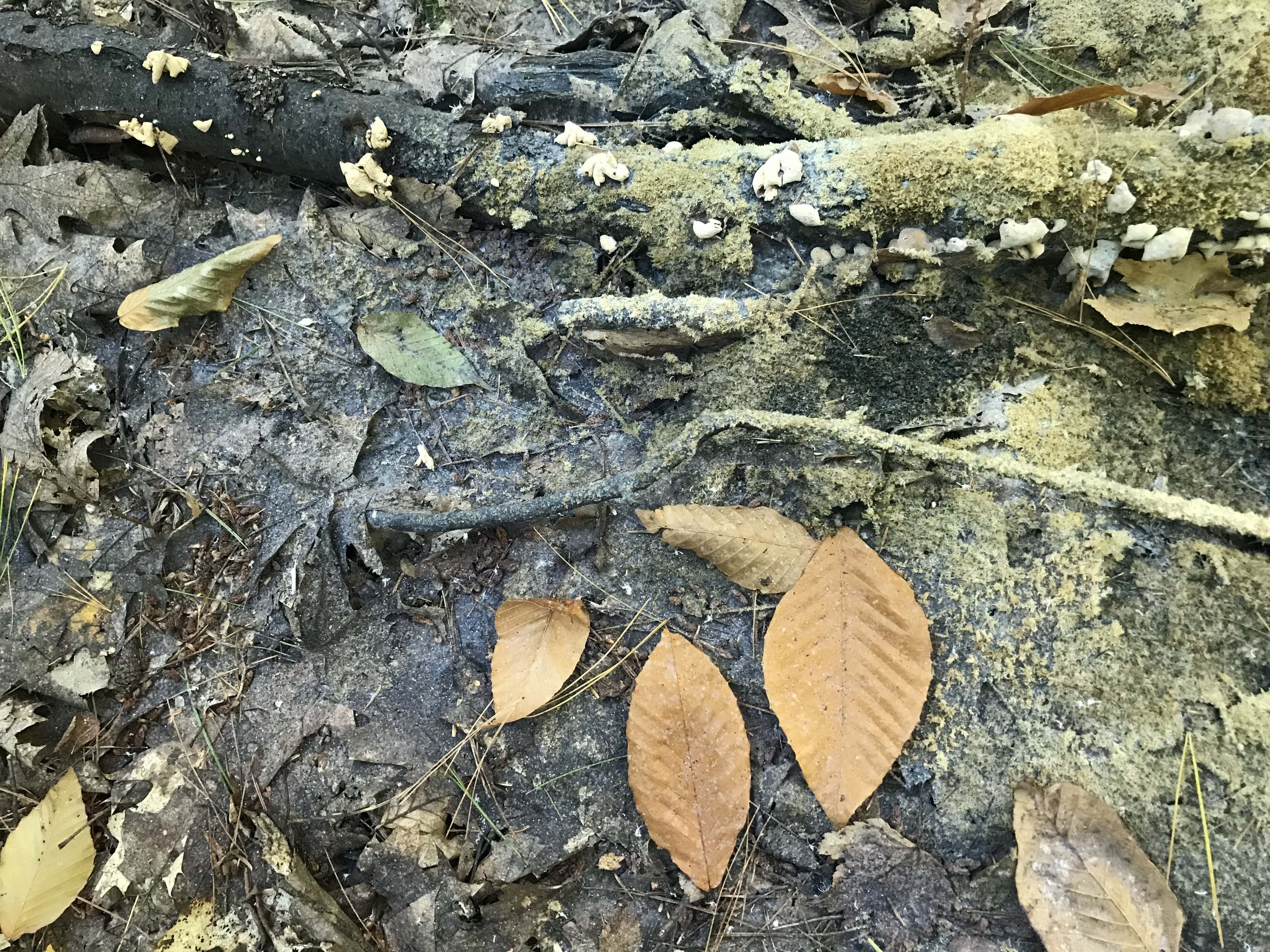
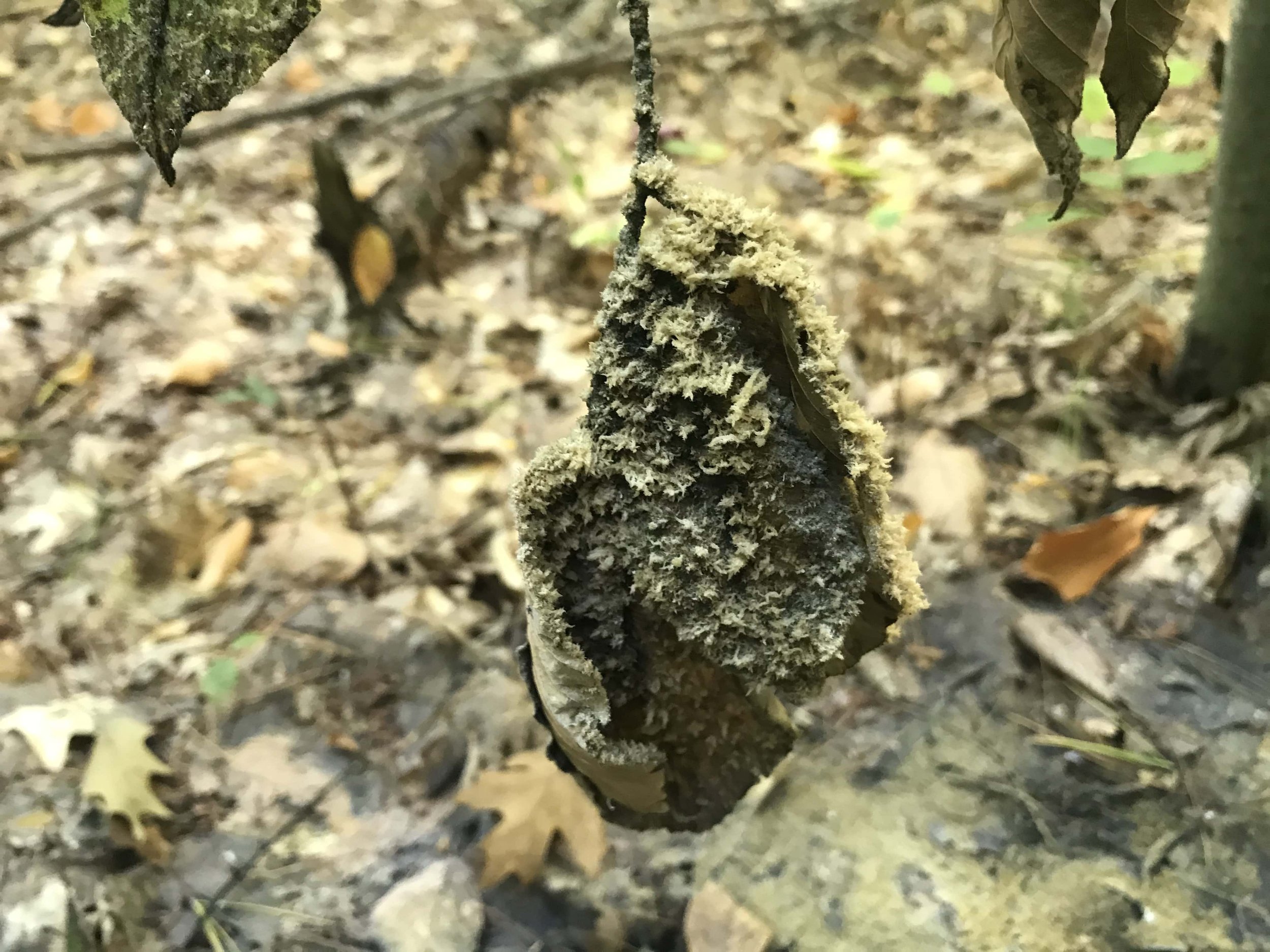
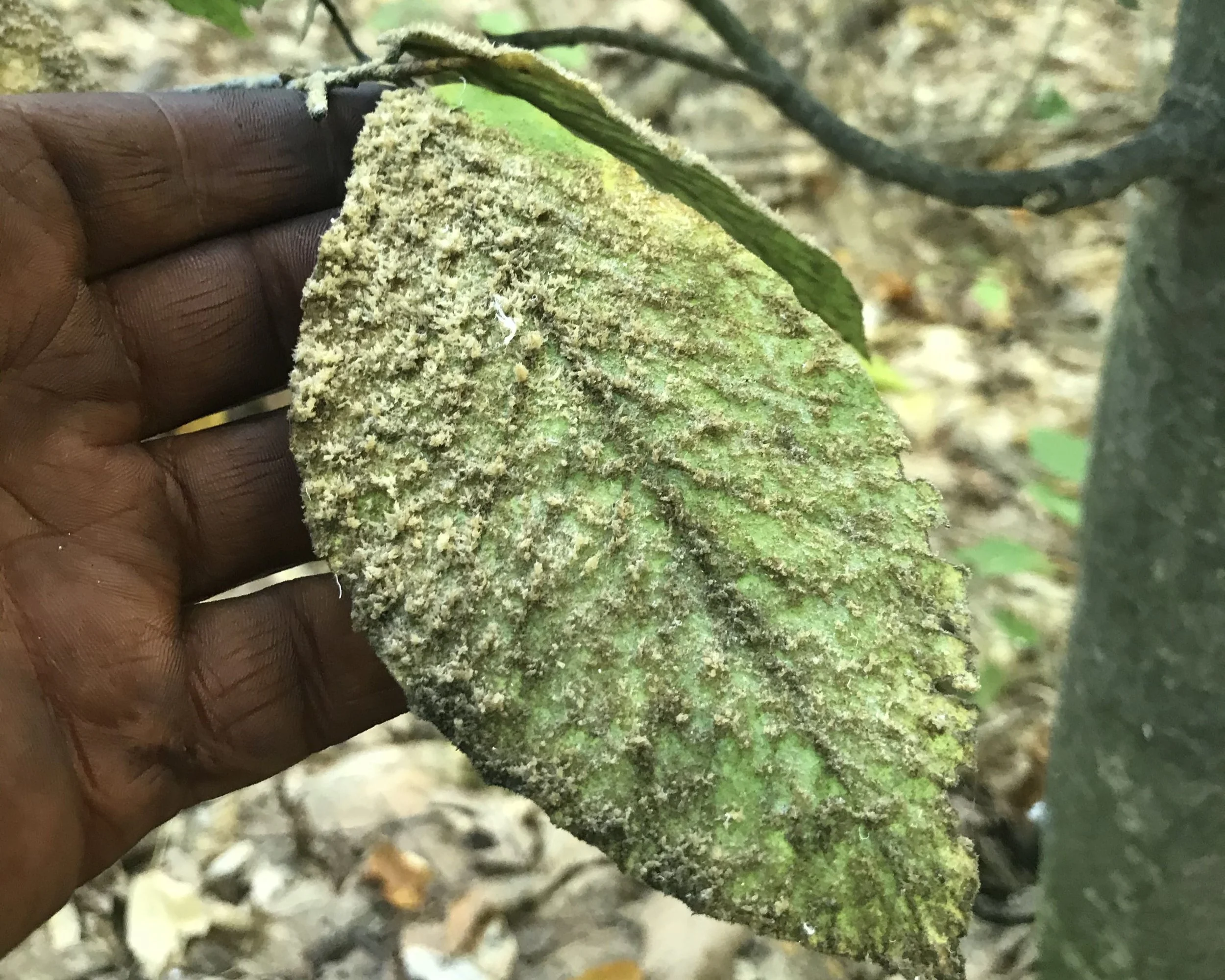
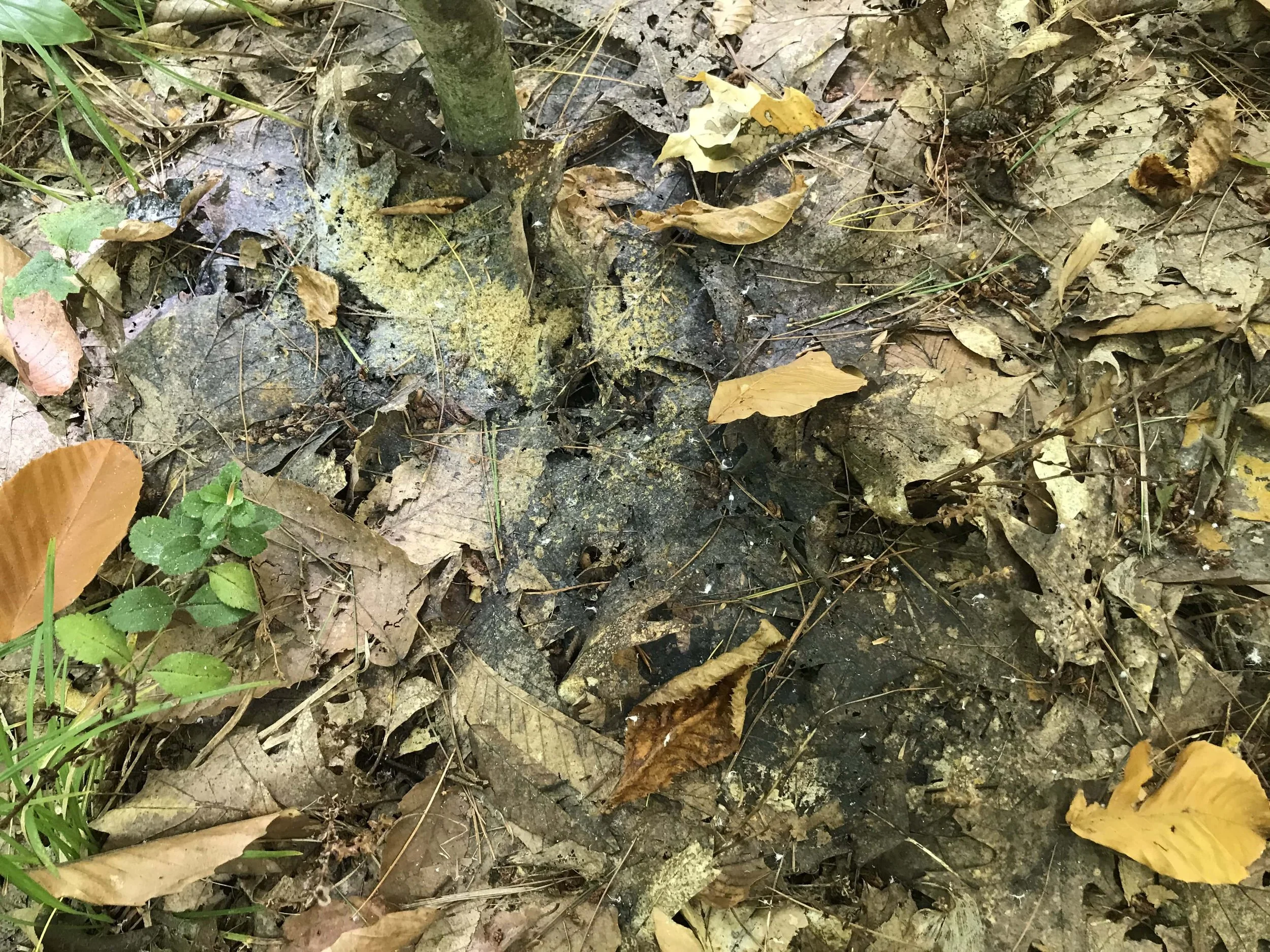
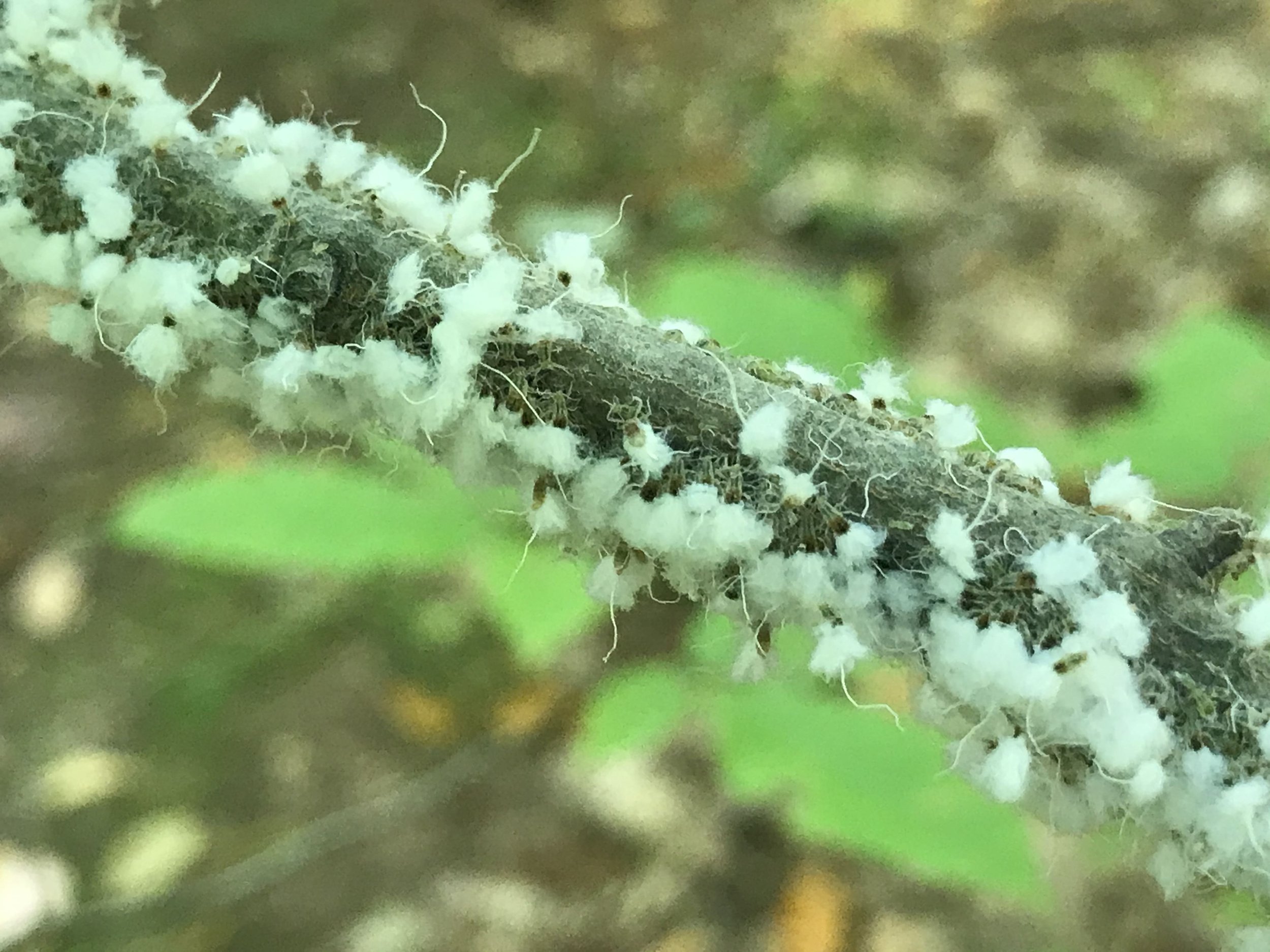
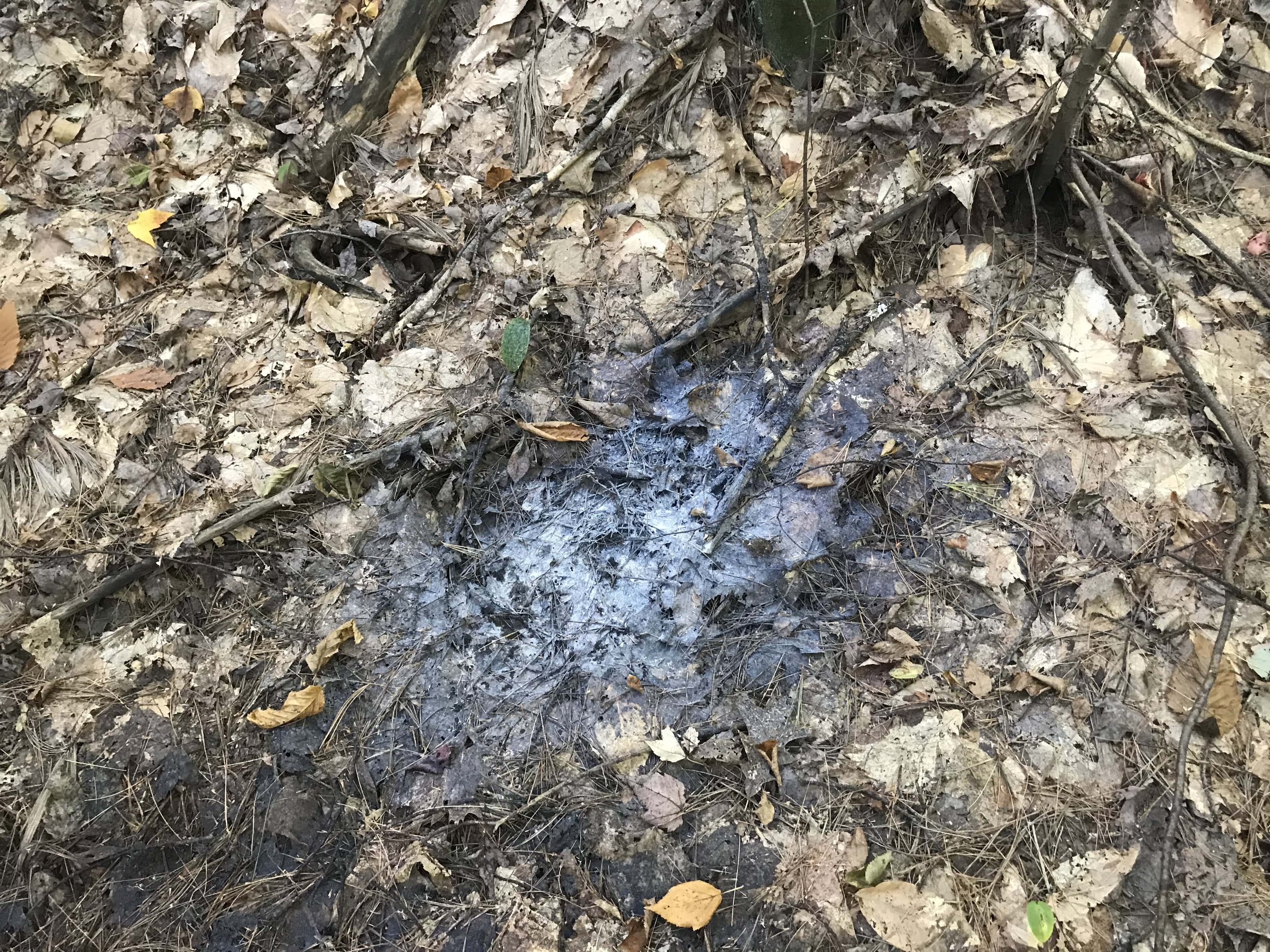
I was so interested in this Honey Dew Eater fungi that I ended up doing a whole show about it. You can check it out here.
Being my first outing with the FBO I have nothing to compare this trip with, but I can say with certainty I will be back. I enjoyed myself and I believe others did as well, despite the short encounter with some Ground-nesting Yellowjackets (Vespula or Dolichovespula sp.) or ducking out of the way of horses (Equus ferus caballus) every few minutes. My only qualm was that it was not long enough! But I am sure most of these reports end that way.
To learn more:
Amatoxins in Wood-Rotting Galerina marginata
Polypeptide Toxins in Amanita Mushrooms
Mushrooms and Other Fungi of North America by Roger Phillips. Firefly Books, 2010.
FBO Newsletter Vol 30 (2), Summer 2018 with “Botanical Roots” article on Autumn Coral Root by Michael J. Oldham and Jessica Consiglio.
A Guide to the Orchid of Bruce and Grey Counties by the Bruce-Grey Plant Committee of the Owen Sound Field Naturalists. Self published, 1997.
Scorias spongiosa, The Beech Aphid Poop-eater, from Tom Volk's Fungus of the Month for September 2007, retrieved on October 5th, 2023.
Ep. 227 : Honey Dew Eater

